Savannah, GA: Part One
Click on the first photo in each group and scroll to see the square photos at full size.
To start at the beginning of this series, visit Road Trip!
We ended our Road Trip! of November 2016 on a high note with our first visit to Savannah, GA. Similar to Charleston with its southern charm, gorgeous historic homes and great food, Savannah is another place we can’t wait to come back to.
By the time we arrived we were ten days into our trip. Our enthusiasm for tours and side trips had slowed, and we just enjoyed the city. We slept a little later and had a little less on our plates each day, which made for a wonderful end to our vacation – and it leaves more things to see when we return in the future.
It was only about a two-hour drive from Charleston to Savannah, so we decided to take the scenic route and take a side trip to stick our feet in the ocean at Edisto Beach, SC. Putting first things first, we decided on an early lunch at McConkey’s Jungle Shack.
We ordered the fish tacos, which included the catch of the day. As we waited and waited, we were joking that they were still out catching the main ingredient, but secretly we didn’t really mind. We had a couple of sweet teas and enjoyed the memorabilia that was all around the interior, along with the ocean breeze that was wafting through the screens.
On our table was a little information about Edisto Beach, which was formerly called McConkey’s Beach. In the late 1800s, the McConkey family moved into Locksley Hall, a 2,000 acre plantation which included the present-day Edisto Beach and state park. That place seemed to be cursed, and in the article just above you can read all about the tragedies, deaths and suicides that occurred before AND after they moved into the house. Nowadays the house is called the Seaside, and so far the current owners haven’t had any unfortunate events – that we know of.
“(Locksley Hall) Seaside Plantation House is located in a rural agricultural setting on Edisto Island. It is the only brick Federal plantation house remaining on the island. William Edings, a planter of sea island cotton, purchased the Seaside Plantation property in 1802; stylistic and structural evidence indicate that the house was built ca. 1810.” READ MORE and see some HISTORIC PHOTOS at the National Register Properties in South Carolina
Our trip was less than a month after Hurricane Matthew ravaged this area, and several members of a rebuilding crew were dining at the table next to us. Edisto Beach was closed and most of the rest of the beach is privately owned, so we scrapped any further jaunts and just headed straight to Savannah.
We arrived in Savannah just in time to check into the Studio Homes at Ellis Square, which are gorgeous and smack dab in the historic district. Savannah is a little smaller than Charleston, so everything is very accessible.
A fabulous service of the city is the CAT – Chatham Area Transit – which offers free transit in and around the city, but we chose a two-day pass on the Old Town Trolley which is quite reasonable and we get a tour guide as part of the package. Another advantage – the woman at the Studio Homes told us that if we boarded the trolley near the end of the day, it wouldn’t count as one of our days. We rode the whole route and it was a great way to get a lay of the land and a feel for what we might want to see while we’re here. The driver was very knowledgeable about the area and we saw several “must-sees” for the following days.
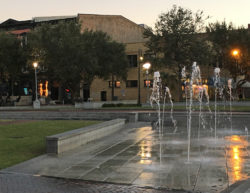 On the way back, the trolley dropped us near the fountain at Ellis Square which was kinda pretty in the near sunset. It would have been a nice way to cool off on a hot summer day, but our early November visit went from a little chill to very pleasant, so no need for a splash.
On the way back, the trolley dropped us near the fountain at Ellis Square which was kinda pretty in the near sunset. It would have been a nice way to cool off on a hot summer day, but our early November visit went from a little chill to very pleasant, so no need for a splash.
We walked a few short blocks to Churchill’s Gastropub and Taphouse for a brew and ended up having dinner. This is an old British pub with beautiful, dark wood, loads of history and a great choice of beers. For a short video to hear more (and see), click on the link above and then hit the arrow at the bottom center. We ended up back another night for the Shepherd’s Pie and the Bangers and Mash – because we were just walking by and we liked it so much the first time.
During our three-day visit, our goal was to explore the River Walk, lots of great restaurants, some historic houses and many of the 22 “squares” that Savannah is known for. Click here for a great map that shows the River Walk, the squares, the trolley routes and other places of interest. One day we took the trolley to the farthest point and walked our way back, and the next we did just the opposite. The historic district is only 2 square miles, so you can probably walk both ways if you aren’t old like us. We toodle along and stop a lot, so that’s our excuse.
“Way back in 1733, when General James Oglethorpe first placed boots upon the soil we now call Savannah, he had a grand scheme for laying the city out in a manner which made sense, was easy to navigate and gave the citizens of this new city places to do things out in public. So, General Oglethorpe came up with the idea of laying the city of Savannah out in a grid pattern with Squares, which are open areas made for public use, spaced out throughout this grid. These Squares were originally used to practice and drill for the militia, but today they are gathering places of beauty and history.” – READ MORE about Savannah’s Squares or here is another link with more photos and descriptions from Savannah.com
Sidewalks cut each square into quadrants, and in the center there’s a fountain or an area for relaxation, contemplation or getting a little history – or all of the above. Most have fabulous Live Oak trees and most have that Spanish Moss that is so predominantly southeast. The German Memorial Fountain (below) is in Orleans Square, and is a tribute to early German Immigrants for their part in the establishment and growth of the Colony of Georgia.
“Telfair Museum [yellow building pictured above] is the oldest public art museum in the South. The legacy of one visionary Savannahian, it was founded in 1883 through the bequest of prominent local philanthropist Mary Telfair, who left her home and its furnishings to the Georgia Historical Society to be opened as a museum.” – READ MORE about the Telfair Museum and the Telfair Academy of Arts & Sciences.
Several highlights of Wright Square are below.
Lafayette Square was a favorite of mine, especially since the Cathedral of St. John the Baptist is located here. Click on the link for some fantastic photos of the inside of this cathedral, whose “congregation was formed in the late 18th century when French émigrés fleeing revolutions in France and Haiti found refuge in Savannah.”
The Six Pence Pub (below) was used in the movie “Something to Talk About” with Julia Roberts and Dennis Quaid. The famous park bench where Forest Gump was waiting for the bus is now in the Savannah History Museum, but the statue below of General James Oglethorpe, (the founder of the colony of Georgia) is the centerpiece of Chippewa Square, where the scene took place. Unfortunately, I don’t have a photo of the house where “Midnight in the Garden of Good and Evil” took place, but the store window below may bring back a memory or two about the book. Click here for a few of the other movies shot in Savannah.
“The much-heralded preservation efforts of historic homes and buildings in downtown Savannah GA were born in the 1950’s when a group of women joined forces to stop the planned demolition of the Isaiah Davenport Home (below). This federal style house today stands as a testament to those efforts more than a half century ago and also takes us back to the early 19th century for a look into Savannah’s past.” – READ MORE about Savannah’s Attractions
Note the double stairway. Different stairways were used by men and women, so the men couldn’t see the women’s ankles. For almost a century, Leopold’s has been serving up delicious ice cream, and what sight-seeing day is complete without ice cream? I can see why it has been in business for so long!
The final photos from this post were taken at Forsyth Park, at the south end of the city. Unlike the squares that are quite small, Forsyth is the largest park in the historic district and covers 30 acres. A hub for social activity for tourists and locals alike, lots is going on here – and on Saturdays there is a great farmer’s market. The fountain shown below – located at the north end of the park – was built in 1858 and has benches stationed all around it. Forsyth Park is a must see!
Check out some more beautiful photos of this fascinating city at VisitHistoricSavannah.com.
Up next: Savannah, GA: River Street
Happy trails,
Barb

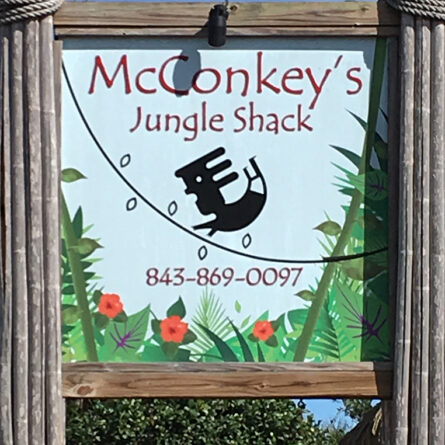
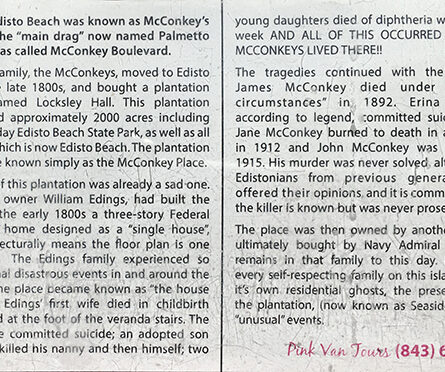
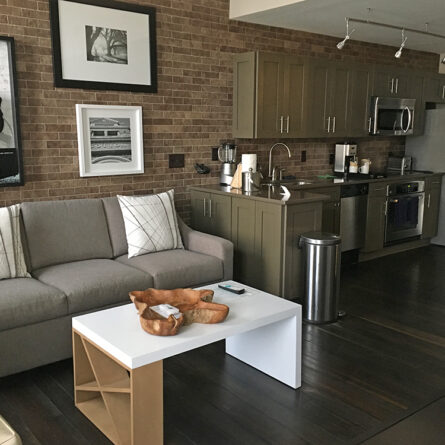

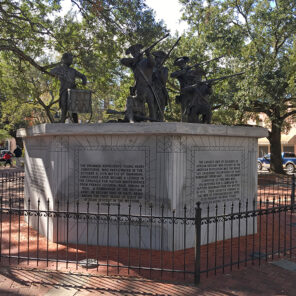
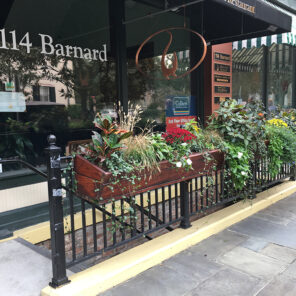
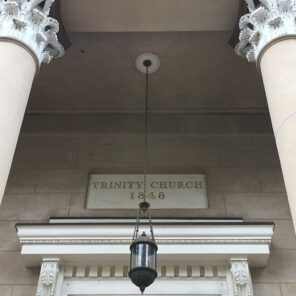
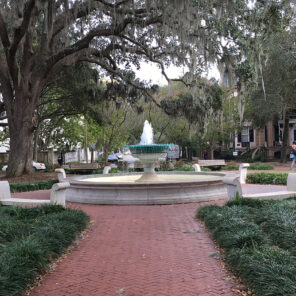

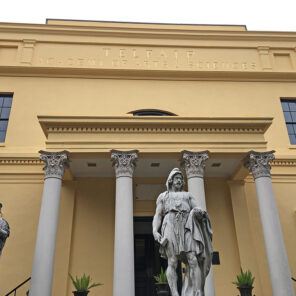

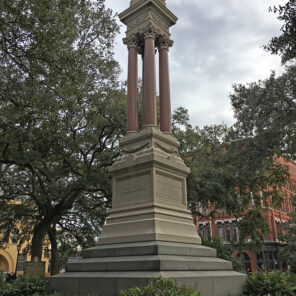
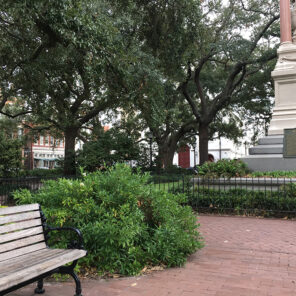

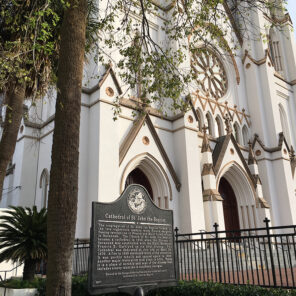


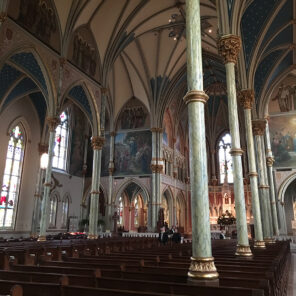



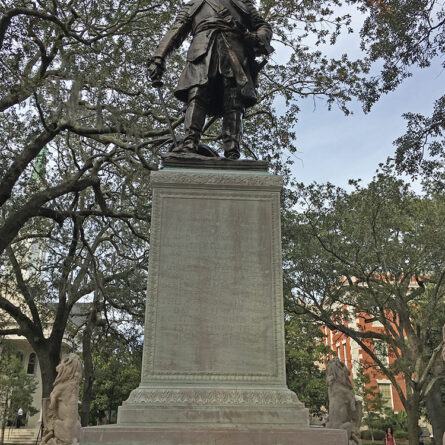
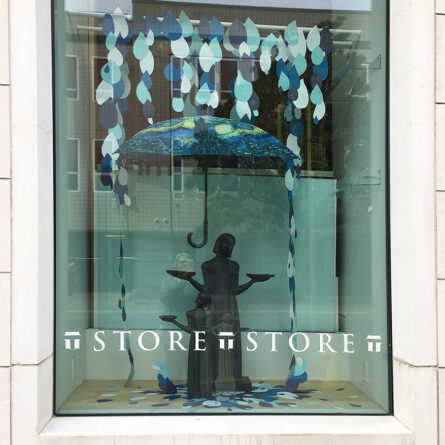
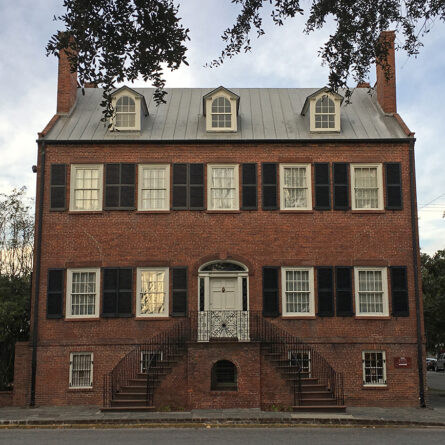
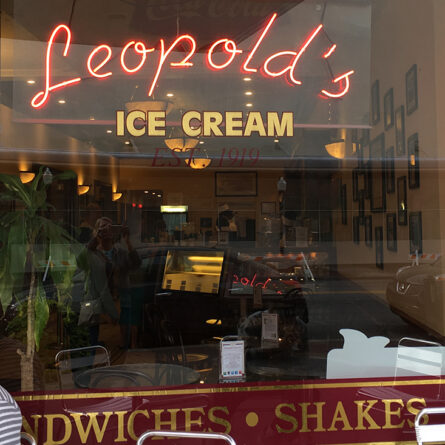
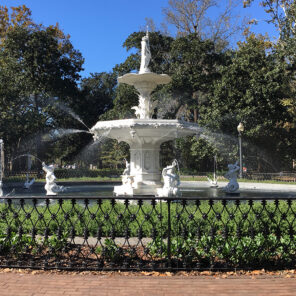
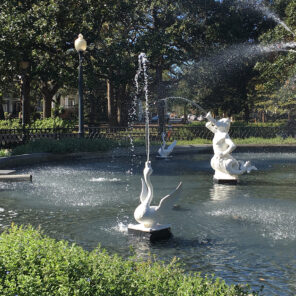
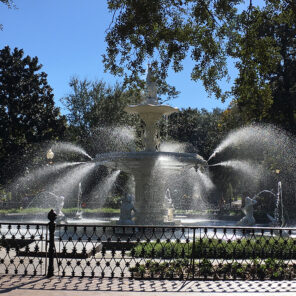






Comments are closed here.